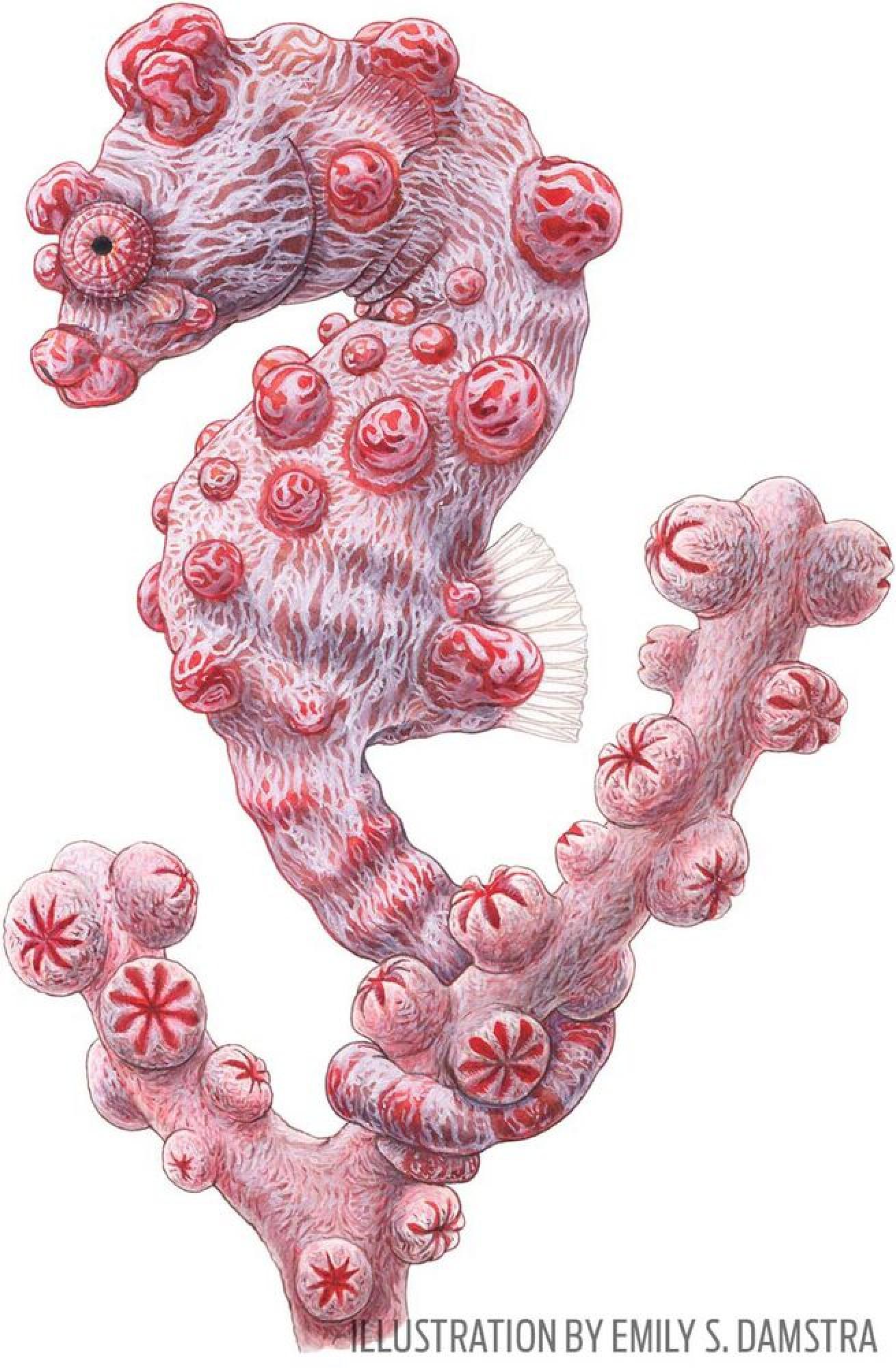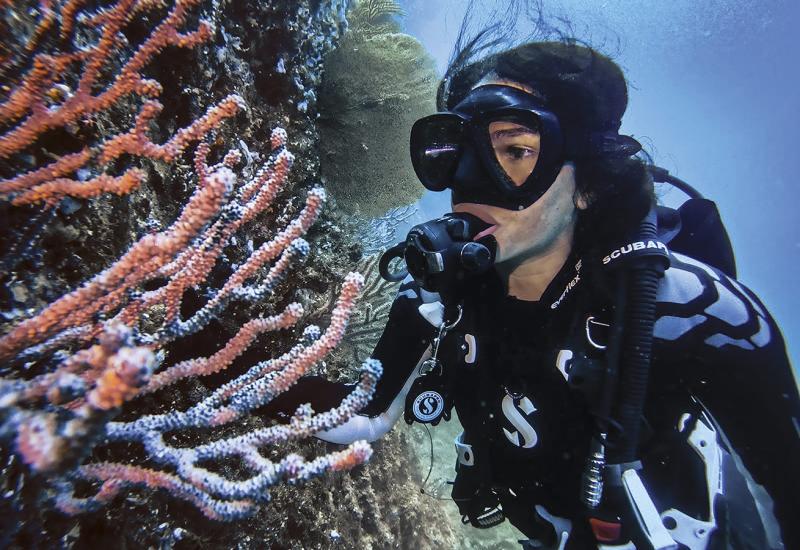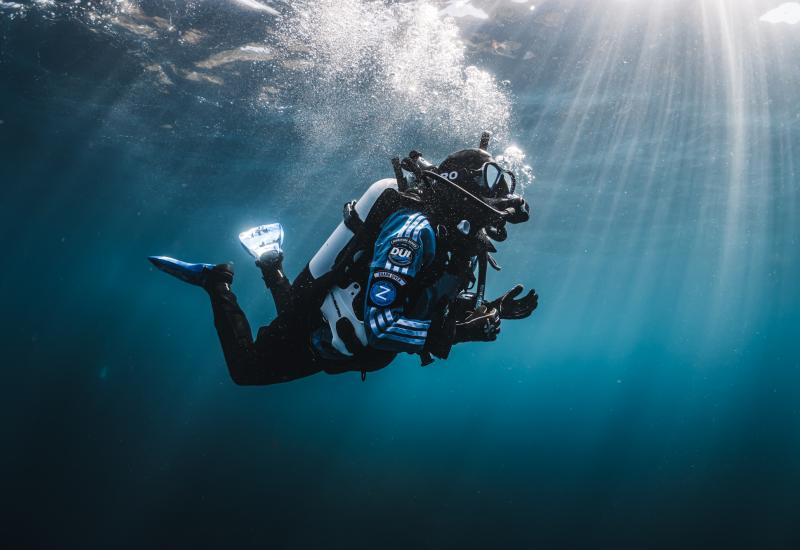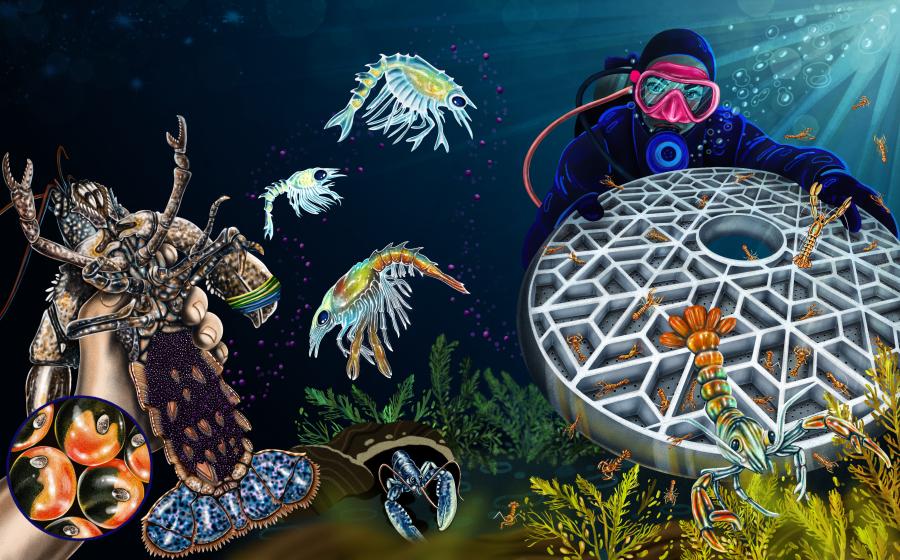11 Facts You Didn't Know About the Pygmy Seahorse
These underwater marvels are as rare as they are tiny.

Illustration by Emily S. DamstraThe Pygmy Seahorse
1. The world’s smallest seahorse, Satomi’s pygmy seahorse, measures just 1.4 cm (0.55 inches), which is smaller than a dime.
2. Like all seahorses, male pygmies become pregnant and brood the developing young in a special pouch.
3. True pygmy seahorses have two special adaptations for their small size: one gill opening rather than two, and a brood pouch located within the body cavity instead of on the tail.
4. Denise’s pygmy seahorses have one of the smallest home ranges of any fish. They spend the entirety of their adult lives in an area smaller than the size of a side plate.
5. A pygmy seahorse was photographed at 330 feet — the deepest on record — by a submersible off the Great Barrier Reef.
6. Pygmy seahorses have no eyelids and are extremely sensitive to bright lights, such as flashlights and excessive strobe flashes. Divers should bear this in mind when observing or photographing them.

Photo by Nature Picture Library/AlamyLike all seahorses, male pygmies become pregnant.
Related Reading: Best Destinations to Dive With Big Animals

Photo by Waterframe/AlamyPygmy seahorses have no eyelids, so they can be extremely sensitive to bright lights.
7. Pygmy seahorses, usually males, fight by trying to knock over their opponent with their neck or by grasping them around the body with their tail.
8. Seahorses belong to the genus Hippocampus, although pygmies differ enough that one day they could be assigned a new genus.
9. So little is known about these rare fish that all seven species are listed as “data deficient” by the World Conservation Union, which means their conservation status cannot be properly assessed.
10. Bargibant’s and Denise’s pygmy seahorses spend their entire adult life attached to a single gorgonian coral, which can be more than 100 years old.
11. After they are born, baby pygmy seahorses are thought to spend a few weeks floating in ocean currents before settling on to the reef.
Follow Richard Smith’s underwater adventures at oceanrealmimages.com.










